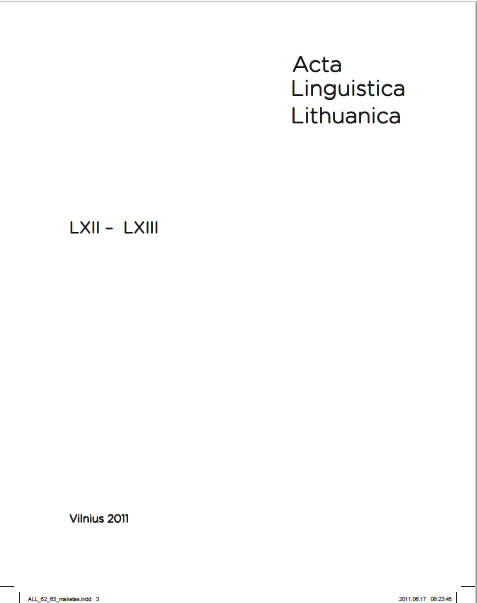Senosios lietuvių kalbos añskat, šiskat, tàskat ir su jais susiję žodžiai
Old Lithuanian añskat, šiskat, tàskat and Cognates
Author(s): Daniel PetitSubject(s): Theoretical Linguistics, Syntax, Semantics, Historical Linguistics, Baltic Languages
Published by: Lietuvių Kalbos Institutas
Summary/Abstract: First introduced by the Greek grammarians (Chrysippos, Apollonios Dyskolos) and later elaborated by the German psychologist Karl Bühler (1934: 80), the notion of ‘deixis’ has been much debated throughout the 20th century. Although intuitively appealing, it is an artifact, which encompasses various types of gestural reference and covers a wide range of phenomena with different semantic features. Among the most striking expressions of deixis, the so-called ‘thetic judgements’ occupy a special position, in that they simply report the existence of a situation (e.g. Engl. there is a cat sleeping in my room), while ‘categorical judgments’ simultaneously assert the existence of an object and describe its action or state (e.g. Engl. a cat is sleeping in my room = there is a cat + it is sleeping in my room). This distinction is well known. However, a subclass of thetic judgments seems to have been generally overlooked in the standard textbooks of linguistics and in most specialized monographs and articles dealing with deixis3. Many languages present special deictic particles, which draw the attention of a speech partner to some event or state of affairs (e.g. Lat. ecce, Russ. vot, Fr. voici, voilà ‘here is/are’).
Journal: Acta Linguistica Lithuanica
- Issue Year: 2011
- Issue No: 62-63
- Page Range: 11-25
- Page Count: 15
- Language: English

